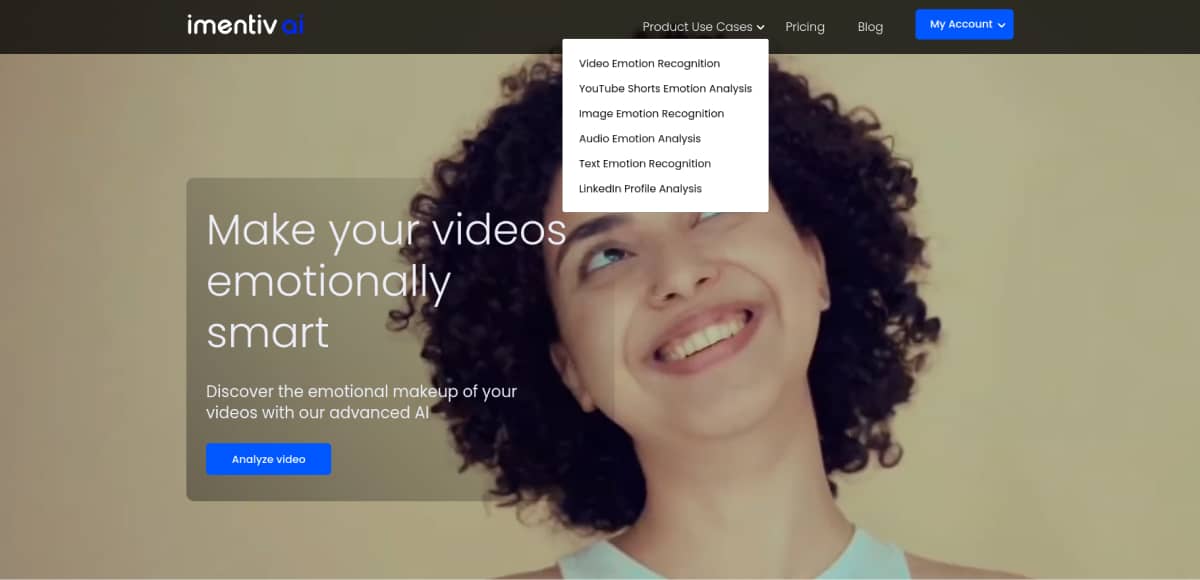
Understanding Emotion AI: Applications, Benefits, and Limitations
Emotion AI, also known as Emotion Recognition AI, is a fascinating development that is changing how machines understand our feelings and emotions. But what exactly is Emotion AI, and how does it work?
In this blog, we'll delve into the basics of Emotion AI, explore its applications, and benefits, and address some common questions surrounding this innovative technology.
What is Emotion AI?
Emotion AI refers to the branch of AI that focuses on understanding and interpreting human emotions. It involves developing algorithms and systems capable of recognizing, interpreting, and even simulating human emotions. At its core, Emotion AI aims to enable machines to understand and respond to human emotions more human-likely.
How Does Emotion AI Work?
AI can analyze vast amounts of data to identify behavioral and psychological patterns that may elude human perception, delivering rapid analysis. The AI model for emotion detection typically involves various techniques such as facial recognition, voice analysis, natural language processing (NLP), and sentiment analysis.
Some Emotion AI technology employs multi-modal emotion recognition, enabling the identification of emotions from various data formats such as video, audio, text, and images.

These techniques enable machines to detect emotional cues from various sources, including facial expressions, tone of voice, and textual content. Emotion AI algorithms can infer the emotional state of individuals and respond accordingly by analyzing these cues.

Facial detection (& recognition) and face emotion recognition using AI open doors to innovation across various sectors, including ad agency solutions, entertainment insights, mental health applications, financial sentiment analysis, and venture capital assessments.
The quality of AI, like any software, hinges on its design, training, and application. These examples showcase AI's transformative potential, offering insights and opportunities for innovation across industries.
Powerful Applications of Emotion AI
Emotion Recognition AI finds applications across diverse industries, including:
Healthcare:

- Enhanced Mental Health Care: Therapists can leverage Emotion AI to analyze video recordings of patient interviews. Frame-by-frame analysis of facial expressions reveals subtle emotional shifts, aiding in diagnosing conditions like depression or anxiety with greater accuracy.

Additionally, image emotion recognition of photos taken during sessions can provide a more comprehensive picture of a patient's emotional state throughout therapy.
- Proactive Patient Monitoring: In hospitals, Emotion AI can continuously analyze facial expressions through video cameras. This can alert nurses to potential pain or discomfort before a patient even speaks up, leading to faster and more effective care.
Marketing:

- Understanding Emotional Impact: Marketing videos can be analyzed using Emotion AI to discover emotional trends throughout the video like the happiness levels of actors or the overall sentiment (excitement, confusion) evoked. This data helps understand how the video is likely to affect viewers and allows for refining future marketing campaigns for maximum emotional impact and audience engagement.
- Product Development Driven by Emotions: Analyzing video testimonials via facial recognition provides insights into how actors in the testimonials feel about the products. This valuable information can inform the development of new products that better cater to customer needs and emotions.
Education (as a Research Tool):

- Effortless Bulk Data Analysis: For students pursuing higher studies in fields like psychology or marketing, Emotion AI tools become a powerful research aid. Large datasets of videos and images containing human interactions can be effortlessly analyzed to identify emotional patterns and trends related to specific topics. This supports research and provides a deeper understanding of human behavior.
Entertainment:

- Social Media Content with Emotional Resonance: Content creators can leverage Emotion AI to analyze their videos before posting. By understanding the emotional impact of different scenes (facial recognition and sentiment analysis), they can tailor their content to better engage with their audience and evoke specific emotions.
- Movie Trailers with Maximum Impact: Studios can use Emotion AI to analyze the emotional response elicited by movie trailers. Identifying which scenes resonate most strongly with viewers (facial recognition analysis) allows for optimizing trailers for maximum impact and generating excitement for the film's release.
Financial Analysis:

- Sentiment Analysis Powered by AI: Emotion AI can analyze video or audio recordings of financial news broadcasts or company presentations. Subtle changes in facial expressions or vocal tones of speakers can be detected, potentially indicating underlying confidence or concern about the market or a specific company. This valuable information can inform investment decisions.
- Deeper Insights into Startup Pitches: Emotion AI enables venture capitalists/ incubators to analyze video recordings of pitches from potential startups. Assessing the founders' emotional delivery alongside the content of their pitch (facial recognition and text analysis) provides deeper insights into the team's passion, confidence, and ability to handle challenges. This can lead to more informed investment decisions.
These are just a few examples of how Emotion AI is transforming various industries. As the technology evolves, we can expect even more innovative applications that leverage the power of emotional data to shape a future built on deeper understanding.
Benefits of Emotion AI

- Enhanced User Experience: Emotion AI enables more intuitive and empathetic interactions between humans and machines, leading to a better user experience.
- Insights and Analytics: Emotion AI provides valuable insights into emotions, enabling businesses to make data-driven decisions and improve their services accordingly.
- Save Time & Effort: Analyze large volumes of videos simultaneously, eliminating the need for tedious, individual processing. This translates to significant time savings for your team.
- Actionable Data: Get sentiment and emotional intensity data to understand how deeply content resonates. Make informed decisions, and improve results.
- Data-Driven & Objective: Eliminate the risk of bias in your video analysis. Our tool provides unbiased, factual results based on your chosen parameters, ensuring the accuracy of your insights.
- Easy Data Management & Reporting: Export your analysis results in a convenient CSV format. This enables seamless integration with your existing workflow and simplifies data analysis and reporting
Limitations and Challenges
Despite its promising potential, Emotion AI faces several challenges including Cultural Nuances. Nonverbal communication can vary significantly across cultures. Emotion AI is constantly evolving to understand these variations better, ensuring a more comprehensive analysis.
Common Questions about Emotion AI

- Can AI recognize emotions from faces and other cues?
Absolutely! AI emotion recognition technology analyzes facial expressions, voice tone, and even text to infer human emotions. While accuracy is improving, context and cultural nuances still play a role in understanding emotions. - How accurate is AI at recognizing emotions, including microexpressions?
Emotion AI accuracy varies depending on factors like data quality, emotion complexity, and the application. Sophisticated systems can detect microexpressions. - Why is emotional AI good?
Emotional AI enhances human-machine interactions, improves user experiences, and enables more personalized services across various industries. - Where is emotion AI used?
Emotion AI finds applications in healthcare, marketing, education, customer service, and other sectors to understand and respond to human emotions effectively. - Can AI convey emotion?
While AI can simulate emotions through text or voice synthesis, it does not experience emotions in the same way humans do. - What are the disadvantages of emotion AI?
Disadvantages include accuracy limitations, ethical concerns, and technical constraints associated with Emotion AI systems. - What is the limitation of feeling AI?
The limitation lies in its ability to accurately interpret and respond to complex human emotions, especially in diverse cultural contexts. - Is AI emotionally intelligent?
While AI can exhibit behaviors that may appear emotionally intelligent, its understanding of emotions is based on algorithms and data rather than subjective experience.
In conclusion, Emotion AI holds tremendous potential to revolutionize various aspects of our lives, from healthcare to marketing and beyond. As Emotion AI continues to evolve, it promises to reshape the way we interact with technology and each other, ushering in a new era of empathetic and emotionally intelligent machines.
Notes:
- It is believed that by processing extremely large volumes of data, AI will be able to recognize behavioral and psychological patterns that are not easily recognizable by humans, and then provide the analysis quickly.
- Another promising aspect of adopting Emotion AI is that it may help with the decision-making process. Human judgment is susceptible to heuristics, biases, and "noise” (according to Daniel Kahneman, the Nobel-prize winner for his work in behavioral economics). By presenting data-driven results, AI should help to reduce those flaws. Such a tool could be useful to counter unconscious and institutionalized biases and discrimination.
- The quality of AI, like any software, is dependent on how it is designed, trained, and used.

Are you curious how Emotion AI can even detect personality traits? Click to read the full blog and learn more about this fascinating technology!